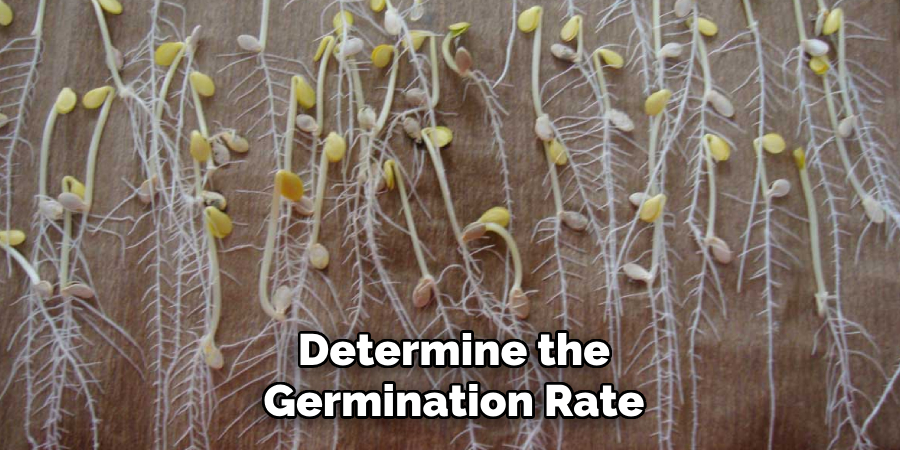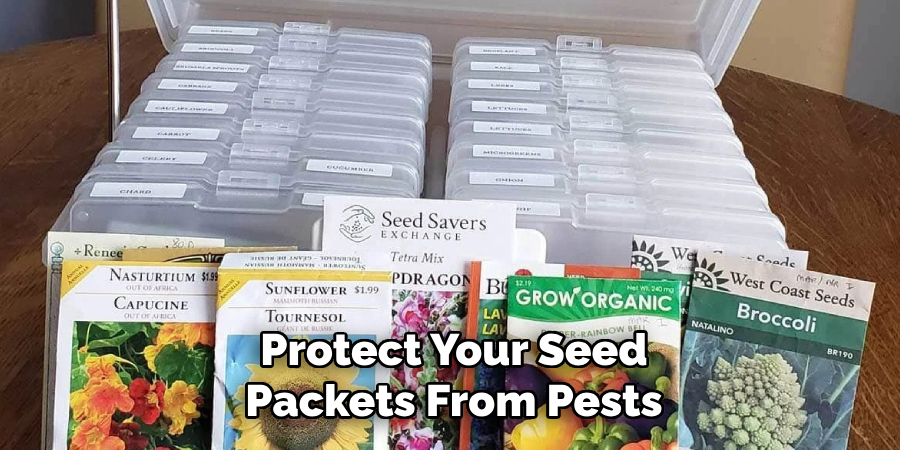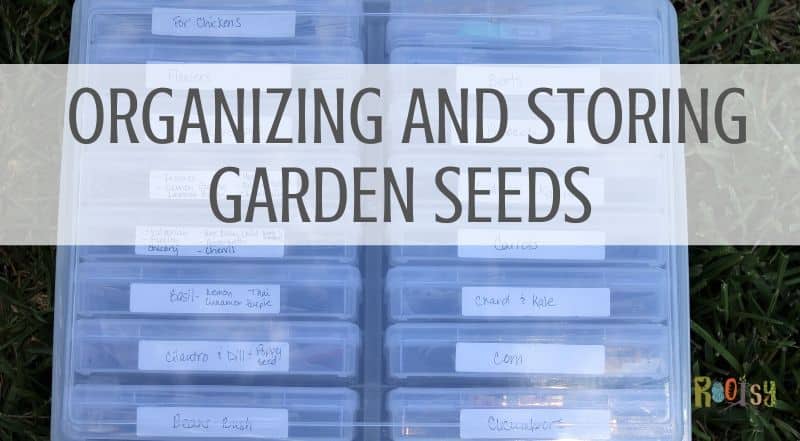To organize garden seed packets, use a binder with sheet protectors or envelopes to store and label each packet. Having an organized system for storing garden seed packets is essential for keeping track of what you have and ensuring they remain viable for planting.
One effective way to accomplish this is by using a binder, which can easily be customized to fit your needs. Purchase sheet protectors or envelopes to store the seed packets, and create labels for each section to easily identify the type of seeds inside.
This method allows you to easily flip through the binder and locate the desired seed packet without the risk of misplacing or damaging them. With this simple organizational solution, you can keep your garden seed packets tidy and accessible for future planting seasons.

Credit: montanahomesteader.com
Why Organizing Garden Seed Packets Is Important
Organizing garden seed packets is crucial for easy access to desired seeds, preventing seed loss or damage, and efficient planning and planting. With well-organized seed packets, you can easily find and retrieve the specific seeds you need for your garden.
This eliminates the frustration of rummaging through disorganized piles or drawers. Moreover, by keeping your seed packets organized, you minimize the risk of losing or damaging seeds, which can significantly impact your gardening efforts. When you know exactly where each seed packet is, you can effectively plan your planting schedule and ensure that you utilize all the seeds you have.
This way, you can avoid delays or confusion during the planting process. Taking the time to organize your garden seed packets yields countless benefits and contributes to a successful and enjoyable gardening experience.
How to Organize Garden Seed Packets: Step by Step Guide
Sorting And Categorizing Garden Seed Packets
Organizing garden seed packets is essential for a successful planting season. To start, group seeds by plant type to easily locate varieties. Next, sorting seeds by planting season ensures the right seeds are sown at the right time. Additionally, categorizing seeds by sun or shade preference helps determine the best spots in the garden.
By organizing seed packets systematically, gardeners can optimize their planting process and smooth their gardening activities. It is important to maintain a tidy seed storage area to avoid misplacing packets and ensure everything is easily accessible. Create a method that works for you, whether it’s using labeled boxes or a seed organization binder.
Following these guidelines will help gardeners stay organized, save time, and ultimately have a thriving garden.
Storage Options For Organizing Garden Seed Packets
When organizing garden seed packets, it’s important to have storage options that keep everything accessible. Seed storage boxes are a convenient choice, as they provide compartments and labels for easy identification. Dividers in these organizers help to separate different types of seeds, preventing any mix-ups.
Another option is to create a diy seed catalog binder, where you can categorize and arrange your seed packets based on planting season or plant type. This allows for quick referencing when planning your garden. Whichever method you choose, it’s important to keep your seed packets organized to ensure you can easily find what you need when it’s time to plant.
Labeling And Tracking Garden Seed Packets
Labeling and tracking garden seed packets is crucial in maintaining an organized garden. To ensure easy identification of seeds, using appropriate labeling methods is essential. By clearly marking each packet, you can easily recognize the type of seeds and their respective planting instructions.
Moreover, labeling helps in keeping track of the seed’s use and viability. Regularly checking the labeled packets allows you to assess the quantity of seeds you have used and determine if they are still viable for future planting. This prevents wastage and helps in planning for future gardening endeavors.
Therefore, make labeling and tracking a priority to maintain an organized and efficient garden.
Maintaining Seed Vitality And Freshness
Maintaining the vitality and freshness of garden seed packets is essential for successful gardening. Proper storage conditions are crucial for preserving the quality of seeds. It is advisable to rotate and use the seeds in a timely manner to ensure their viability.
Performing regular seed viability tests is also important to determine the germination rate. These tests help to identify any decrease in the quality of seeds over time. By following these steps, gardeners can optimize the potential of their seed packets and achieve productive and vibrant gardens.

So, take care of your seeds and store them correctly to enjoy a flourishing garden year after year.
Tips And Tricks For Organizing Garden Seed Packets
If you’re looking for tips on how to organize garden seed packets, we’ve got you covered. Creating a seed inventory checklist is a great way to start. It helps you keep track of the seeds you have and those you need to buy.
Planning and designing a seed sowing schedule is another useful strategy. It ensures that you plant your seeds at the right time for optimal growth. Additionally, utilizing digital tools can simplify seed organization. There are apps and websites available that allow you to store and categorize your seed packets digitally.
By following these simple tricks, you’ll have a well-organized collection of garden seed packets in no time.
Frequently Asked Questions On How To Organize Garden Seed Packets
How Do I Organize My Garden Seed Packets?
To organize your garden seed packets, you can use a binder with clear plastic sleeves or a file box with labeled envelopes. Sort packets by plant type and label them accordingly. Keep them in a cool, dry place to maintain their quality.
What Is The Best Way To Label Seed Packets?
The best way to label seed packets is to use waterproof markers or labels that won’t fade or smudge. Include essential information such as the plant name, variety, date purchased, and any special instructions. This will help you stay organized and know what to expect when planting.
How Long Do Garden Seed Packets Last?
Garden seed packets typically have a “packed for” date on them, indicating their viability. Most seeds will last for one to three years if stored properly. However, freshness can vary depending on the plant type, so it’s best to check the specific recommendations for each seed variety.
Should I Keep Seeds In The Refrigerator?
While some seeds benefit from being stored in the refrigerator, not all do. Generally, seeds of fruits, vegetables, and herbs can be stored in a cool, dry place. However, certain seeds, like those of strawberries or certain wildflowers, may require a period of cold stratification to germinate, which can be achieved by refrigerating them.
How Can I Protect My Seed Packets From Pests?

To protect your seed packets from pests, store them in airtight containers, such as glass jars or plastic bags, and keep them in a cool, dark place. Adding natural pest deterrents like dried herbs or bay leaves can also help.
Regularly check for signs of pests and remove any affected packets to prevent infestation.
Conclusion
Organizing garden seed packets is a simple yet effective way to ensure a successful and productive gardening experience. By following the tips and techniques discussed in this blog post, you can keep your seed packets neatly arranged and easily accessible.
Remember to store them in a cool, dry place to maintain their viability. Using a designated storage system such as a binder or box will not only save you time and frustration but also help you keep track of expiration dates and seed varieties.
Additionally, labeling your packets with important information will further assist you in planning and designing your garden layout. As you embark on your gardening journey, remember that organization is key. With a well-organized seed packet collection, you’ll have the tools you need to create a beautiful and thriving garden.
So, get ready to unleash the full potential of your seeds and watch your garden flourish!

